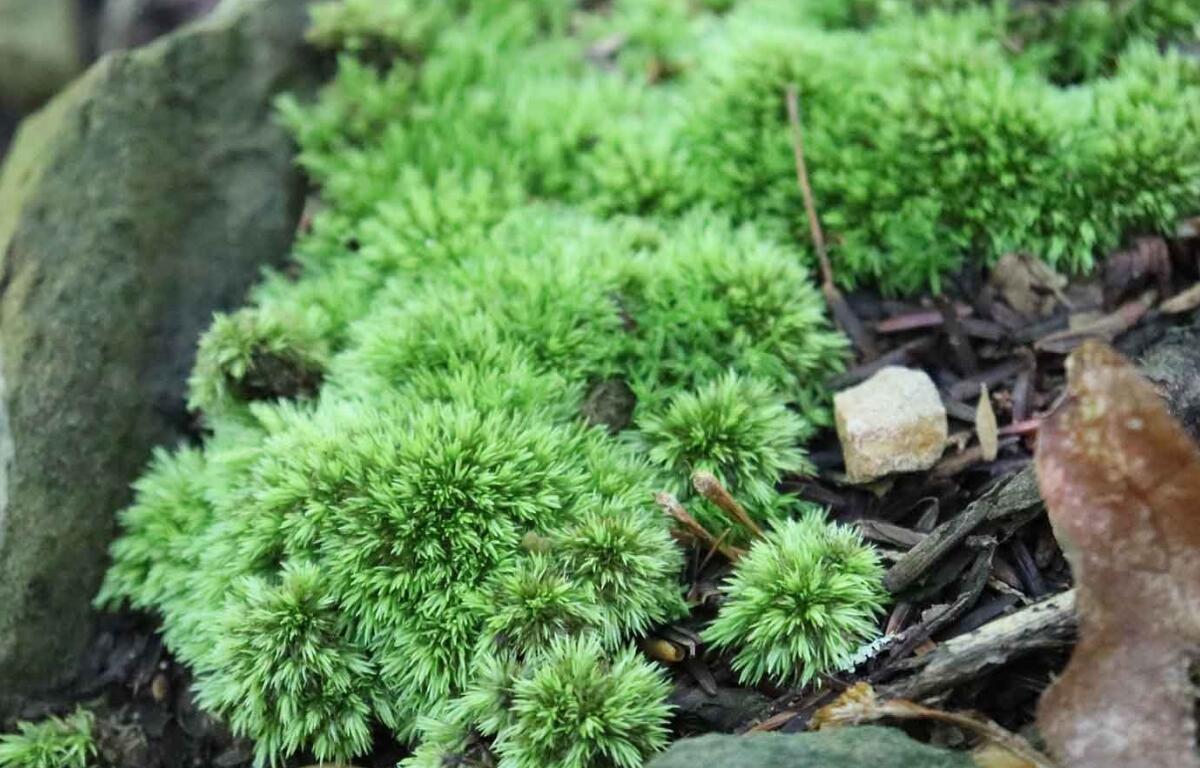BENTONVILLE, VA (Virginia Farm Bureau) —Algae emerged from ancient oceans and became moss that colonized barren land 400 million years ago. Those bryophytes carpeted landscapes long before other plant life evolved.
Though tiny, the ecological role of moss is outsized—providing habitat for insects and other invertebrates, or nesting materials for some bird species. Bryophytes help stabilize soil, reduce erosion, and are natural sponges for water retention. Mosses also improve water infiltration for soil, supporting plant growth and overall ecosystem health.
The botanical simplicity of moss ironically makes it hard to eliminate.
“So why work against Mother Nature?” mused Virginia Tech professor Mike Goatley, a turfgrass specialist with the School of Plant and Environmental Sciences. “If moss is already growing on your property, it indicates that environmental conditions are favorable for it.”
Elizabeth McCoy, a contributing writer for James City County Williamsburg Master Gardener Association, began encouraging moss as a groundcover in shady parts of her garden several years ago.
Transplanted moss can be secured with a small stick or floral pins.
“Then you press or step on it firmly to ensure there is good adhesion between the bottom of the moss and the new surface,” McCoy said.
Some nurseries sell living moss.
“But most of us can easily collect small bits recovered from the spaces in a sidewalk or along a foundation to propagate larger areas of cultivated moss.”
For successful transplanting, find a spot that matches the original environmental conditions. Happy moss will tend to itself, McCoy said.
“It doesn’t need fertilizing or mowing to stay beautiful year after year,” she concluded. “Gardening with moss is gardening with nature in its purest form!”
Shenandoah River State Park supports 208 species of moss. These nonvascular plants grow on soil, rocks and bark in a range of environmental conditions.
The park sponsors “March Moss Madness” hikes along the state park’s Cottonwood Trail around St. Patrick’s Day.
Samantha House, Shenandoah River State Park education specialist, said the Moss Madness hikers admire species along the woodland trail including broom forkmoss, common fern moss, pincushion moss, rose moss, seductive entodon moss and spoon-leaved moss.
With hair-like rhizoid filaments instead of roots, “Moss can grow on just about anything it can grab on to,” House said.
Future moss hikes are planned at the park. Or hikers can take a self-guided tour from the Massanutten Shelter parking lot at 350 Daughter of Stars Drive.




